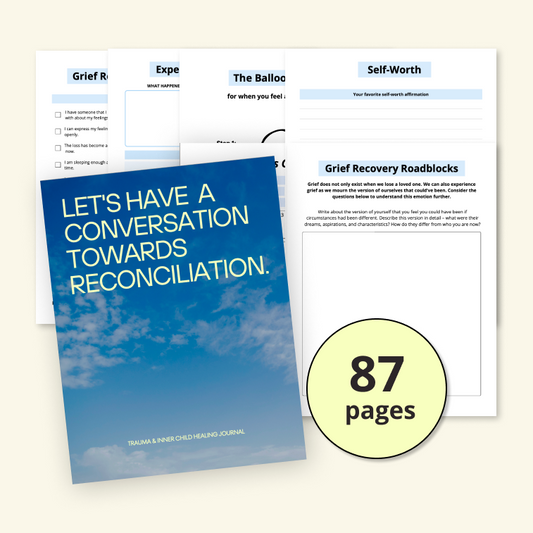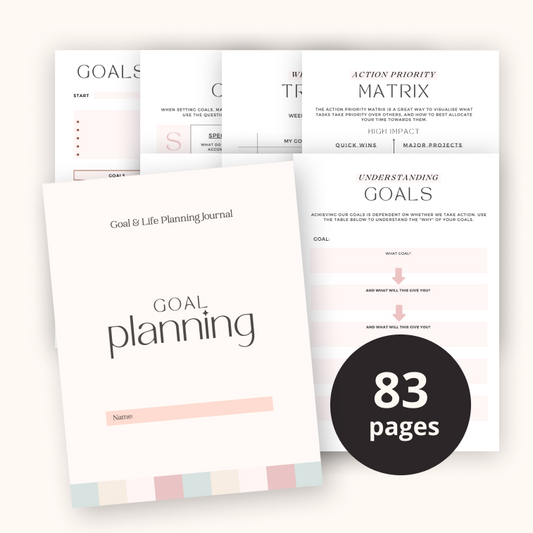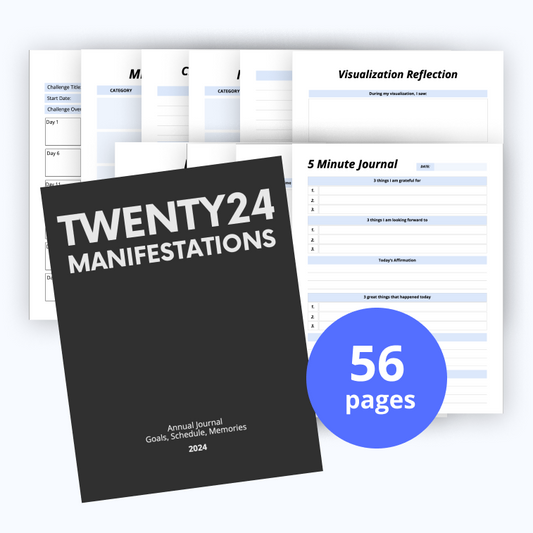Journaling for self-love is more than a trend; it's a transformative practice that can lead you to a deeper understanding of yourself and your needs. Imagine flipping open a notebook and finding the keys to self-compassion and growth right at your fingertips.
With the right techniques, your journal can become a powerful tool for self-discovery and love. Whether you're a seasoned journaler or new to the practice, there's always room to deepen your journey. Jump into the world of self-love journaling with us, and discover five ways to make your journaling practice a source of strength and joy.
Key Takeaways
|
Establishing a Daily Journaling Routine
Creating a journaling habit for self-love isn't just beneficial, it's essential for your personal growth. Whether you use a structured Self-Love Journal, or regular notebook, establishing a daily routine is the key to get the most out of your habit.
Here's how to make journaling an integral part of your day.
Pick a Specific Time
Journaling works best when you do it consistently. Choose a time of day when you're less likely to be disturbed. For many, early morning or right before bed are ideal times. This helps in making your journaling practice a non-negotiable part of your daily routine.
Create a Comfortable Space
Find a spot where you feel at ease and inspired. It might be a cozy corner of your living room, a quiet space in your garden, or even a serene park bench. Make sure this space is associated with calmness and reflection, making your journaling experience more enjoyable.
Keep Your Journal Close-by
Always have your Self-Love Journal and a favorite pen within easy reach. By eliminating the need to search for your journal or a pen, you're more likely to stick to your journaling routine.
Consider carrying your journal with you, so you can jot down thoughts and feelings as they arise, regardless of the time.
Set Realistic Goals
Start with manageable expectations. If writing a full page seems too much, begin with a few sentences or bullet points. As you get into the swing of things, gradually increase your writing. Don’t forget, the goal is to build a habit, not to overwhelm yourself.
Use Prompts
If you're unsure what to write about, use prompts. Wholesome's Self-Love Journal comes packed with thought-provoking questions and prompts designed to guide your self-reflection. Prompts are a great way to kickstart your writing, especially on days when you're feeling stuck.
By incorporating these steps into your daily life, you'll find that journaling for self-love becomes not only a habit but a cherished part of your day.
Reflecting on Your Emotions and Thoughts
When it's about understanding and nurturing your inner self, reflecting on your emotions and thoughts plays a key role.
You'll find that setting aside time to explore your feelings can lead to profound insights and foster a deeper self-connection. The Self-Love Journal by Wholesome is designed to guide you through this process, making it simpler and more intuitive.
To start, consider writing about your day. What moments lifted your spirits? Which ones brought you down?
This isn't just about recording events; it's about recognizing how these experiences affect your emotional well-being.
By identifying patterns in your responses, you can begin to understand your triggers and work towards handling them in healthier ways.
Another effective strategy is to ask yourself questions that probe deeper into your emotional state. For example:
- How did I feel when I woke up today, and what influenced that mood?
- What am I grateful for right now?
- Is there something I'm avoiding or anxious about?
These questions encourage you to pause and listen to what your heart and mind are saying. Often, you'll discover emotions and thoughts that you didn't realize were influencing your behavior.
Also, don’t forget reflecting on your positive experiences is just as important as acknowledging the negatives. Celebrate your successes, no matter how small.
Did you complete a task that's been lingering on your to-do list? Write it down and recognize your effort. Positive reinforcement through journaling can boost your self-esteem and motivate you to keep moving forward.
Also, consider using prompts from the Self-Love Journal to explore specific aspects of your life and emotions that you might not think about otherwise.
Prompts can open up new areas for reflection, helping you to uncover aspects of your personality and past experiences that shape who you are today.
Through consistent practice, reflecting on your emotions and thoughts not only enhances self-awareness but also strengthens your emotional intelligence. You'll develop greater compassion for yourself and others, paving the way for a more fulfilling and loving relationship with yourself.

Setting Positive Affirmations in Your Journal
Incorporating positive affirmations into your journaling practice is a transformative step towards amplifying self-love.
These powerful statements foster a mindset of positivity and self-belief, crucial components of self-care and personal growth. Affirmations in your Self-Love Journal pave the way for a more loving and compassionate relationship with yourself.
How Do You Begin?
Start each day by writing three affirmations that resonate with your current goals or emotional state.
It could be as simple as, "I am worthy of love and kindness," or as specific as, "I am confident in my ability to handle today's challenges." By doing so, you set a tone of empowerment for your day.
What Makes Affirmations Effective?
For affirmations to truly make an impact, they must be:
- Personal: Tailor them to your needs and aspirations.
- Positive: Frame them in a positive light to encourage a shift in mindset.
- Present: Use the present tense to foster a sense of immediacy and reality.
They should also be incorporated into your daily life, and repeated often. This helps your mind to form new neural pathways, which leads to the affirmations you're speaking becoming your reality.
Incorporating Affirmations Into Your Daily Life
Beyond your journal, affirm these statements aloud or in your mind throughout the day. This practice helps embed these positive beliefs into your subconscious, gradually shifting your self-perception and enhancing your daily experience.
I welcome abundance and positivity in my life.
My challenges help me grow and become stronger.
I treat myself with respect and kindness.
Don’t forget, your Self-Love Journal is a safe space for exploration and expression. Let it serve as a foundation for your journey towards loving yourself more deeply.
Through affirmations, you're not just writing words; you're crafting a more positive and self-compassionate narrative for your life.
Practising Gratitude Journaling
When you're looking to nurture self-love, gratitude journaling stands out as a transformative practice. This method involves jotting down things you're thankful for, which can significantly impact your emotional well-being.
By focusing on the positive aspects of your life, you cultivate a sense of gratitude that can uplift and inspire you.
Why is Gratitude Important?
Gratitude shifts your focus from what your life lacks to the abundance that is already present.
Engaging in gratitude journaling with structured journals such as these encourages you to acknowledge and appreciate the small wins and blessings you encounter daily. This positive habit contributes to enhanced mental health, reducing stress and boosting happiness.
How to Start Gratitude Journaling
To begin, consider these steps:
- Set aside a regular time each day to reflect on moments or things you're grateful for.
- Use prompts to guide your reflections. Questions like "What made me smile today?" or "Who am I grateful for and why?" can be excellent starters.
- Be specific about your gratitude. Instead of writing general statements, detail the particular aspects that made you feel thankful.
- Incorporating gratitude journaling into your routine doesn’t have to be complicated. With the Self-Love Journal, you have a dedicated space to explore and affirm the good in your life, helping to build a foundation of positivity and self-appreciation.
Don’t forget, the goal is to make gratitude journaling a consistent part of your self-care practice.
As you do, you'll likely notice an increase in contentment and a more pronounced appreciation for the daily experiences that shape your life.
This simple, yet powerful habit can be a cornerstone in your journey toward deepening self-love and enhancing overall happiness.
Exploring Creative Journaling Techniques
When you're on the journey to self-love, incorporating creative journaling techniques can add an enriching layer to your practice.
Wholesome journals supports a variety of methods to explore your thoughts and emotions in unique ways.
Here are a few creative avenues to try:
1. Use Visuals
Sometimes words aren't enough to capture the full spectrum of your emotions. That's where visuals come in. You can:
- Draw or doodle your feelings
- Create a mood board with images that resonate with your current state
- Use stickers or stamps that align with your emotions
This visual approach not only makes your journal more engaging but also allows you to express what words cannot.
2. Practise Mind Mapping
Mind mapping is a fantastic tool to visually organize your thoughts.
Start with a central idea, like "Self-Love," and branch out with topics related to it, such as "Achievements," "Gratitude," or "Goals."
This method helps you see connections between different aspects of your life and promotes a deeper understanding of your self-love journey.
3. Write Letters to Your Future/Past Self
This is a powerful technique to foster self-compassion and motivation. Writing to your future self can help you visualize your goals and aspirations, while letters to your past self can offer closure and forgiveness.
These letters serve as heartfelt reminders of your growth and the love you have for yourself.
4. Audio Journaling
For those who find speaking easier than writing, audio journaling is an excellent alternative. Record yourself talking about your day, feelings, and reflections.
Listening back to these recordings can provide insights into your emotional patterns and personal growth over time.
By adopting these creative journaling techniques, you're not just recording your life; you're actively participating in your self-love journey.
Each method offers a different lens through which to examine your thoughts and emotions, making your journaling practice a dynamic tool for self-discovery and growth.
Conclusion
Embracing journaling as a practice for self-love isn't just about writing down your thoughts—it's about creating a space where you can explore, understand, and celebrate yourself.
By integrating the techniques discussed, from daily reflections and probing questions to creative expressions and gratitude exercises, you're not just keeping a journal; you're embarking on a journey of self-discovery and growth.
Don’t forget, every word you write is a step towards a more positive, self-affirming mindset.
So grab your pen and let your journal be a mirror reflecting your journey towards loving yourself more deeply every day.

Frequently Asked Questions
|




